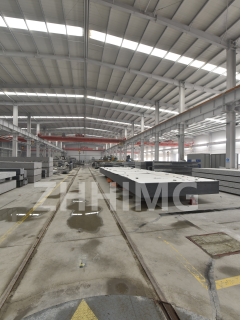Bridge CMMs, or Coordinate Measuring Machines, are state-of-the-art devices used for precision measurement in a variety of industries. The performance and accuracy of a CMM often depends on the materials used to manufacture its key components. Granite is one of the most commonly used materials for the construction of bridge CMMs, as it offers a range of benefits that make it ideal for this application. In this article, we will explore the main advantages of using granite in bridge CMMs.
1. High Stability and Rigidity
One of the primary advantages of granite is its extremely high dimensional stability and rigidity. Granite is a very hard and dense material that is less likely to deflect or deform, even under heavy loads. This means that granite components can provide a stable and rigid platform for the moving parts of a CMM, which is essential for accurate and precise measurement. The high rigidity of granite also means that it can reduce vibration and improve the repeatability of measurements.
2. Natural Damping Properties
Granite also has natural damping properties, which means it can absorb vibrations and reduce noise, leading to a more stable and quiet CMM. This characteristic helps to eliminate extraneous measurement noise and ensures that the CMM delivers accurate results. As precision is essential in many industries, the ability of granite to dampen vibrations can make a significant difference in the overall performance of a CMM.
3. Superior Thermal Stability
Another advantage of using granite in bridge CMMs is its superior thermal stability. Granite has a low coefficient of thermal expansion, which means that it experiences minimal dimensional change due to temperature fluctuations or thermal stresses. The stability of granite leads to less measurement drift, which also ensures more precise and reliable measurements.
4. High Wear Resistance
Granite has a high wear resistance properties, which prevent wearing out due to friction. The hard surface of granite prevents scratches and chips, which result in the longer lifespan of the CMM. This factor is particularly important in high-traffic workshops or measuring environments that experience constant abrasion.
5. Aesthetics
Apart from all the technical features, granite is one of the most aesthetically pleasing materials. Granite components give the CMM an aesthetically pleasing appearance that can blend into almost any environment. The use of granite in CMMs has become a common practice due to its beauty and durability.
Conclusion
In conclusion, granite is an ideal material for the construction of bridge CMMs due to its stability, damping properties, thermal stability, wear resistance, and aesthetics. These properties guarantee that granite components provide accurate and precise measurements while maintaining excellent durability for long term CMM use. Manufacturers are more inclined towards using granite components for the production of CMMs due to its practical, technical and diverse advantages. Thus, it can be deduced that the use of granite in bridge CMM is a prominent feature that guarantees excellence in measurement and longevity of the equipment.
Post time: Apr-16-2024

